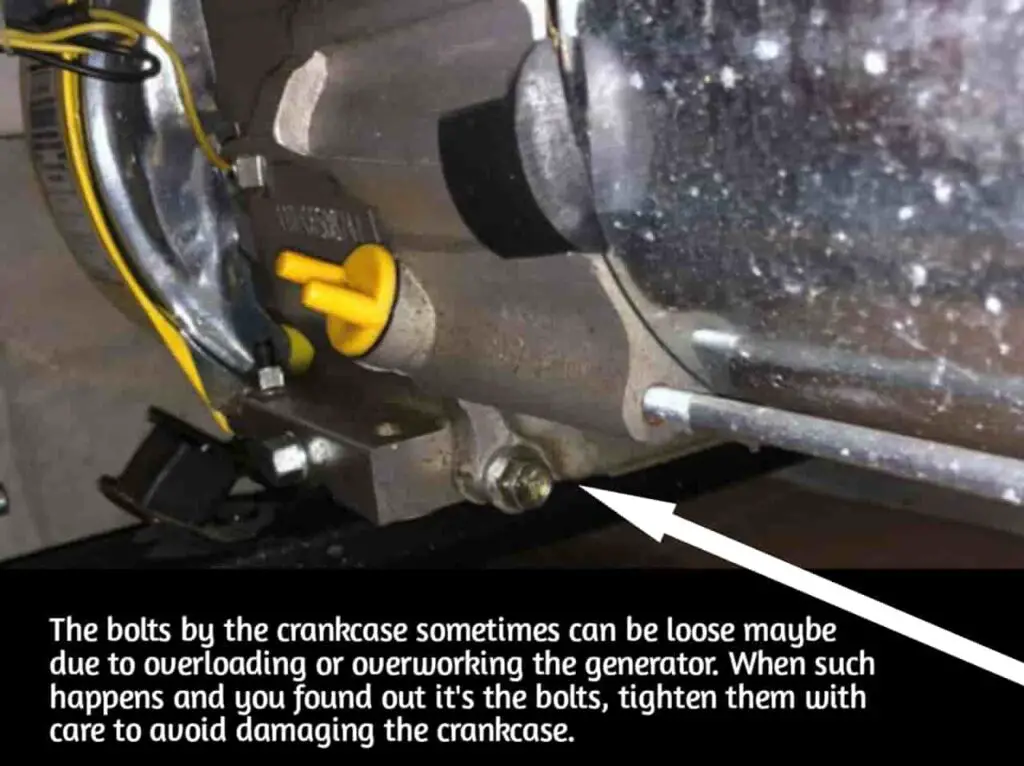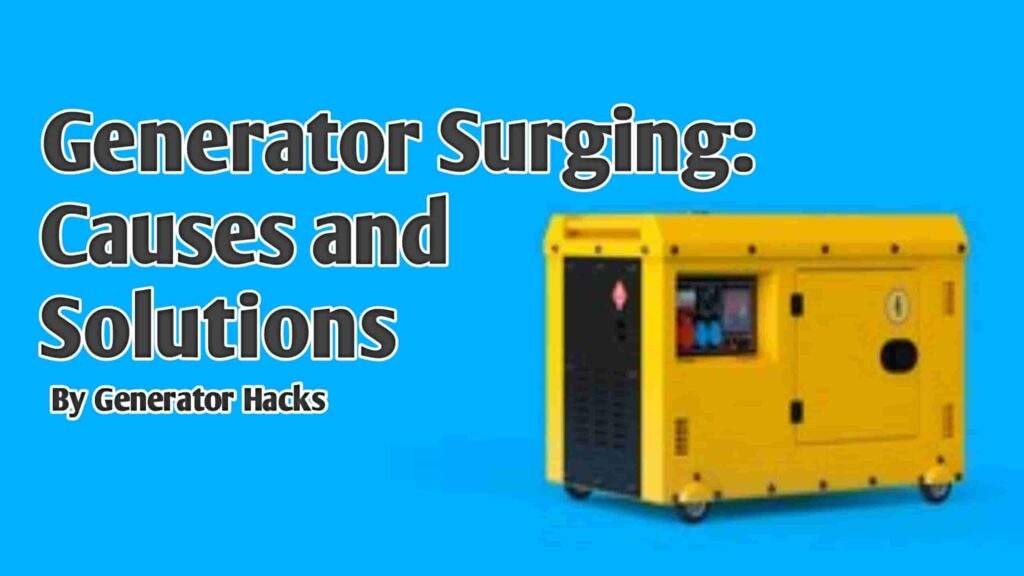As an Amazon Associate, we earn from qualifying purchases. This does not affect the price you pay or the quality of the products you buy. For more information, please read the full affiliate disclosure here.
I was identified with an immense oil leak from a portable generator, although it can happen for all types of generators. After diagnosing this generator, I found that the engine crankcase had dried up, meaning no oil was in it. The leak began a few moments before I saw the generator, and for a few minutes, it all dried up.
Many generator owners are facing this issue, especially when they cannot notice the leakage on time before their generator gets damaged and stops working. If your generator leaks oil, it can be dangerous and cause excessive damage. For instance, it:
- Can damage the engine as a whole.
- Can cause your generator not to function again except you buy a new one.
- Can also cause your generator components/parts, such as the bearings, to get work and make noise.
However, while there are various reasons why you should not allow your generator to leak, you must know that occasionally, you can also experience this problem. But the truth is, if noticed on time, it’s a simple fix with the right generator mechanic.
In that case, here are a few steps to take to fix a generator oil leak.
Important Note:
If you are not a generator repairer, it’s best to consult one for assistance. However, you must gain a basic understanding of the reasons your generator leaks oil. This knowledge can help you communicate effectively with your mechanic and potentially prevent future problems.
Step 1: Identify the Source of the Leak
What I usually do in resolving an oil leak is to locate its source — without finding the source of the oil leak, it would be hard for me to fix the problem.
I begin by inspecting the generator thoroughly. This might involve removing the generator tank or any cover at the generator, etc.
After that, I look for any visible signs of oil around the engine or any wet spots that may indicate a leak.
The common areas prone to oil leaks I thoroughly inspect include:
- the oil filter
- oil drain plug
- gasket seals
- valve seals
- crankcase breather
After a thorough inspection and identification of the exact location of the leak, I will be able to determine the appropriate course of action, which will take me to the next step.
Note:
Often, when you notice oil signs in a specific area, it doesn’t necessarily indicate the source of the leak. For example, oil may leak from the crankcase breather or valve seal, but you might observe the signs collecting in the air filter chamber, especially in portable generators.
Also Read:- Generator Air Filter Soaked with Oil: Causes, Effects, and Solutions
Step 2: Drain the Oil
After I’ve identified the location of the oil left, I drain the oil from the generator before I attempt any repair.
This is technical, and if you don’t know how to drain the oil in your specific model generator, you can refer to the manufacturer’s instructions on how to do so safely.
When draining the oil, ensure you have a suitable container to collect the used oil, as it needs to be disposed of properly at a recycling center.
I removed the oil to prevent further leakage during the repair process and to enable me to work on a clean surface.
Although the oil might have dried up at times, you still have to drain the generator if there is any oil left in it to avoid anything that will temper the fixing process.
Step 3: Inspect and Replace the Gaskets and Seals if Faulty
In many cases, but I don’t know for you, an oil leak is caused by worn-out or damaged gaskets and seals.
In that case, inspect the gaskets and seals around the oil filter, drain plug, and other accessible areas, such as the seal at the starter of your generator using a manual starting recoil.
If you check and notice any cracks, tears, or signs of deterioration from the gaskets, you must replace them and not use them back.
Visit an authorized dealer or parts store to obtain the appropriate gasket and seal replacements specific to your generator model.
Carefully remove the old gaskets and seals and install the new ones according to the manufacturer’s guidelines for your generator model. Ensure they are correctly seated and tightened to prevent future leaks.
Step 4: Inspect the Oil Filter
Not all generators use oil filters. Mostly, oil filters are found on standby or whole-house generators.
In that case, the oil filter can also cause an oil leak in your generator. You should check if the oil filter is properly installed and tightened.
If it appears damaged or loose, replace it with a new filter or tighten it till you think it’s stagnant.
To ensure no future leave from the oil filter, always use the recommended oil filter type and size specified by the generator manufacturer.
Step 5: Tighten Loose Fittings and Connections

Sometimes, an oil leak can occur due to loose fittings or connections, especially if the generator has been working for long hours or has been overloaded.
Often times, it mostly causes oil leaks in the generator. Some things to be done here include
- Inspecting all the oil lines, fittings, and connections associated with the generator.
- Gently tighten any loose fittings or connections using the appropriate tools.
- And be cautious not to overtighten, as it may damage the threads or cause further issues.
Expert Advice:
If you have no experience fixing loose fittings or connections on your generator, consult a professional to help. He has all the tools and knowledge to prevent your generator crankcase from developing a fault.
Step 6: Check the Crankcase Breather
The crankcase breather is designed to allow air to escape from the crankcase while preventing oil from leaking out.
Sometimes, if the crankcase breather becomes clogged or damaged, it can lead to an oil leak, especially in the air filter area.
Clean the breather and ensure it is free from any debris or blockages. If it is damaged, replace it with a new one.
Expert Advice:
The breather can be tricky because if you aren’t a professional, you wouldn’t know if it’s the cause of an oil leak on your generator. The piston rings and valve seals can also cause your generator to leak oil. If you notice your generator blowing out white smoke, ensure you fix it adequately.
Step 7: Refill with Fresh Oil
Once you have fixed the oil leak and made all necessary repairs, it’s time to refill the generator with fresh oil.
Depending on your generator model, refer to the manufacturer’s specifications to determine the correct oil type and the appropriate oil level.
Additionally, carefully pour the recommended amount of oil into the generator and tightly secure the oil fill cap.
🔌 Generator Tools & Social Hub
Maximize your generator knowledge! Use our calculators and join our community for expert tips:
Stay connected for updates and exclusive content:
📘 Facebook Page 🐦 X (Twitter) 📌 Pinterest 🔒 Private Facebook GroupDiscover more from Generator Hacks
Subscribe to get the latest posts sent to your email.


